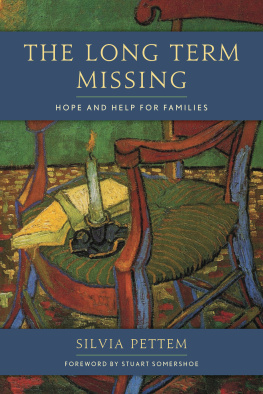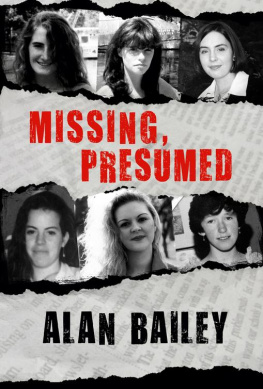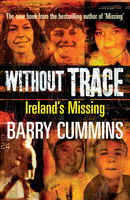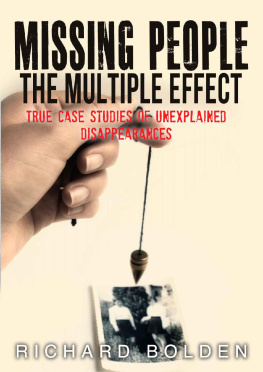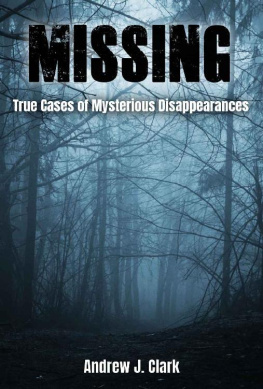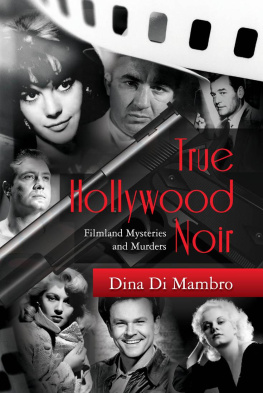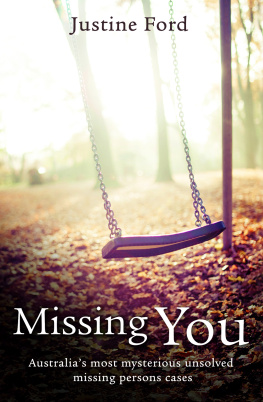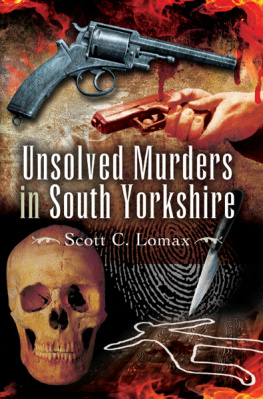Special thanks go to my husband and my best critic, Ed Raines, for reading draft after draft of individual chapters long before I would share them with anyone else. Then, when I did, I welcomed feedback from my sister Marilyn Mildrum as well as friends and fellow researchers Sandy Bausch, Dina Carson, Linda Fulmer, and Micki Lavigne. And I appreciated the efforts of R. H. Walton, EdD, professor of criminal justice at Utah State University Eastern, for brainstorming with me on cases to include, especially those of Judge Joseph Force Crater and William Desmond Taylor.
Thanks, too, to my publisher, Rick Rinehart, for suggesting the topic of Cold Case Chronicles; to his former associate editor Stephanie Scott, who helped me shape the manuscript; to Helen Subbio, who did an excellent job of copy editing; and to senior production editor Meredith Dias, who readied it for publication. Kudos, too, to cover designers, proofreaders, graphic designers, and others who work behind the scenes.
I couldnt have asked for a better foreword writer and manuscript reviewer than longtime friend and colleague Phil West, retired division chief from the Boulder County Sheriffs Office, in Boulder, Colorado. In addition to his writing skills, he provided an invaluable law enforcement perspective during the preparation of the manuscript.
Halfway through the research and writing of this book, the country and the whole world suddenly was forced to live under the restrictions brought on by the COVID-19 pandemic. Instead of the travel and in-library research I had planned, I corresponded with historians, librarians, and individuals in various parts of the country. Like me, most were working from home, but they still gave my questions their careful attention.
Beginning with the chapter on Judge Crater, Id like to thank the reference staff at the Irma and Paul Milstein Division of United States History, Local History and Genealogy, at the New York Public Library. In researching the chapter on Dorothy Arnold, I enjoyed corresponding with Mary Combs and Preston Arnold, fellow genealogical researchers who shared their interest in, and insights on, the socialite. Mary also provided me with some British records on George Griscomb Jr. that came from The National Archives in the United Kingdom.
Linda M. Mackey, with the New York State Office of Parks, Recreation and Historic Preservation, provided historic preservation documentation for the chapter on Hart Island. Patrick Raftery shared pages of his research that gave me an insight into the early burial process at Potters Field. Melinda Hunt filled me in on events in recent years and kindly read my draft for accuracy, while Lori Reese assisted me with a photograph from Redux Pictures LLC.
In writing about Everett Ruess, I appreciated talking with Denise Dastrup, of the Garfield County (Utah) Sheriffs Office, and also with Dustin Driscoll, regional program specialist with the National Missing and Unidentified Persons System (NamUs). Photo archivists Sara Caroline Davis and Lorraine Crouse, from the Special Collections Department of the J. Willard Marriott Library at the University of Utah, went out of their way to locate images of Everett Ruess in their Everett Ruess Family collection. Ana Daraban, from the Salt Lake Tribune, was helpful in answering my questions about a map, published in the Tribune, of Indian Country.
For the chapter on Glen and Bessie Hyde, thanks go to Peter Runge and Cindy Summers for finding a specific photo I requested from the Special Collections and Archives at the Cline Library at Northern Arizona University.
I couldnt have written the chapter on Joseph Halpern without his familys correspondence and photographs as well as the recent and extensive research provided by Josephs nephew, Roland Halpern. Roland and I have kept in contact for several years, and I welcome his willingness to share his familys story with the public. Thanks, too, to Alice de Sturler, author and founder of the research website defrostingcoldcases.com, for helping to publicize Josephs missing person case.
In writing the chapter on Lawrence Bader, Id like to thank the anonymous family member who corresponded with me. As for Twylia May Embrey, her grandniece, Jennifer Kitt, introduced me to Twylias sister Mildred Midge Garner and also provided me with decades-old Nebraska family correspondence and photos. The research skills of Micki Lavigne provided the vital link that led to Twylias second family in Massachusetts.
Credit on the Hatbox Baby chapter is due, first of all, to fellow researcher Sandy Bausch who shared with me the still-unfolding story, as published in the Arizona Republic in recent years by reporter John DAnna. Throughout three decades of perseverance and hard work, DAnna fine-tuned his research and writing skills to become the sagas lead detective, raising the bar for all investigative journalists. Readers can look forward to his continued reporting on the rest of the story, a phrase made famous by the late radio broadcaster Paul Harvey. Id like to also thank Kim Reis, at Imagn (part of the USA Today Network), who assisted me in obtaining Sharon Elliotts photograph.
Gavin Portnoy and Christine Barndt, of the National Center for Missing & Exploited Children, provided me with the poster for Steven Damman in the chapter on child abductions as well as the facial reconstruction image in the chapter on the Boy in the Box: John Doe 1957.
Several others also contributed to the chapter on the Boy in the Box. First, I was pleased to have the opportunity to continue my correspondence with former Vidocq commissioner William L. Bill Fleisher, with whom I had worked in the past on the Boulder Jane Doe case. Warren Kerschbaum, also a Vidocq Society member as well as a retired Philadelphia police lieutenant, contributed the cemetery photograph. Warrens son, Nicholas P. Kerschbaum, has taken the cause of abused children into the next generation.
In illustrating the Boy in the Box chapter, I also wish to thank Josue Hurtado, Kim Tully, and Brenda Galloway-Wright at the Special Collections Research Center, Charles Library, at Temple University in Philadelphia. A product of our correspondence is the photo of the scene where the boy was found, as shown on the cover of this book (and also ).
One of the few people I had the honor of meeting in person was Nels J. Smith, brother of Connie Smith. Nels gave me his familys perspective on Connies disappearance, filled me in on her home surroundings in Wyoming, and contributed her photo. I also would like to thank Jennifer Schwartz, of the Scoville Memorial Library in Salisbury, Connecticut, for corresponding with me on the New England landscape where Connie was last seen. Fellow researcher Sandy Bausch and I have corresponded on this case for years, and her knowledge was very helpful as well. I also appreciate the insights provided by fellow author Michael C. Dooling. Lastly, Im grateful to artist Tim Cox for sharing his very poignant painting, Flowers for Mom.
In years past, while assembling information on the abduction of Marion McDowell, I exchanged several emails with one of her cousins. Although we have not had recent contact, I often think of the McDowell family and the heartache they have lived with for so many years. I have not had personal contact with the family of B. H. Daredevil DeLay, but I came across his photograph in the public domain and want to thank one of his family members, Shawna Kelly, for making the photo available.
For the chapter on William Desmond Taylor, a big thank you goes to Bruce Long both for answering my questions and for assembling his extensive database and website, Taylorology (taylorology.com). Also, I very much enjoyed my correspondence with British military researcher Kevin Storey, who provided new insights on William Taylors service in the British military. Thanks, too, to Edward Meltser, whom I met through FindAGrave. com. He kindly photographed (especially for this book) Taylors/Tanners crypt. Several other photos in this book came from the public domain. The Library of Congress and its staff deserve thanks and praise for preserving and providing these historic photos for all of us to use.


